Abstract
Plasma lead concentrations were determined in 103 subjects, including lead workers and those not occupationally exposed to lead. The plasma lead concentrations in each blood lead group were about half those previously reported, and this difference was shown to be due to the use of heparin instead of ethylenediaminetetra-acetic acid (EDTA) as the anticoagulant. The method for the determination of lead in plasma is detailed and its accuracy discussed. The plasma lead concentration was found to increase with the erythrocyte lead concentration, the mean equilibrium ratio between the two being about 0.74%. The effect of a sudden disturbance of the equilibrium condition on this ratio was investigated. This work supports the view that whole blood lead concentrations should be corrected for haematocrit.
Full text
PDF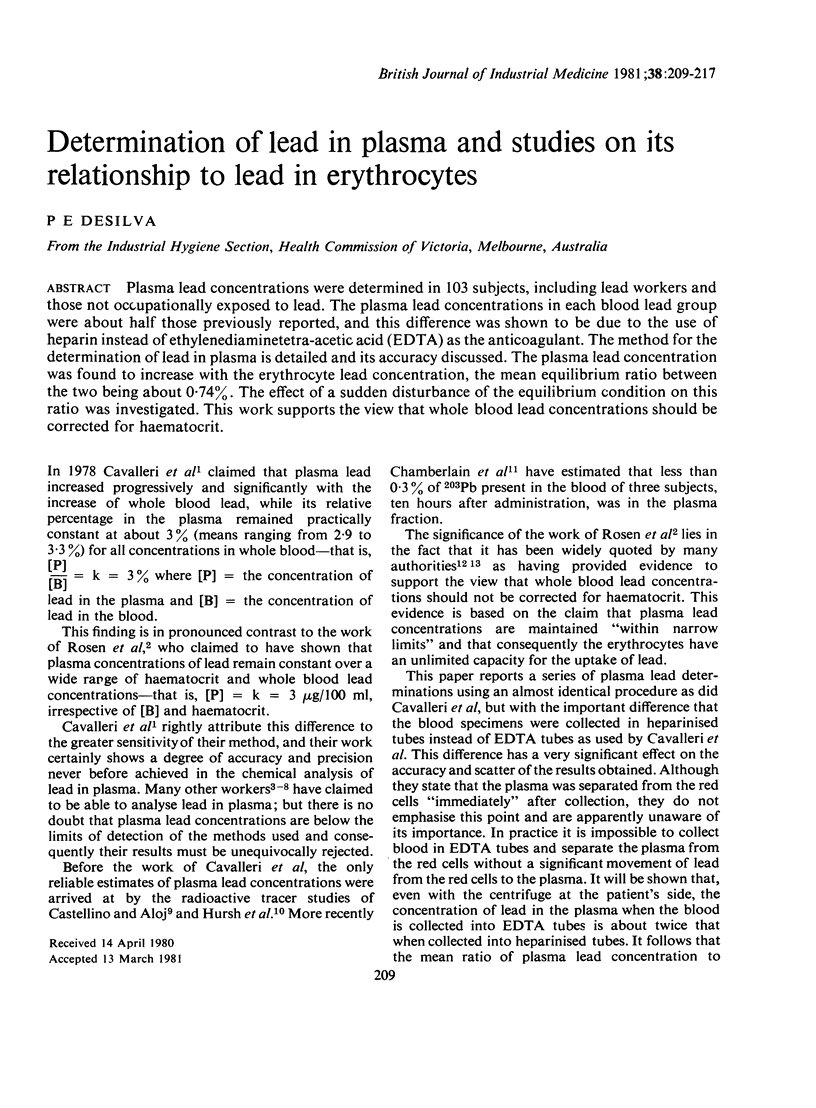
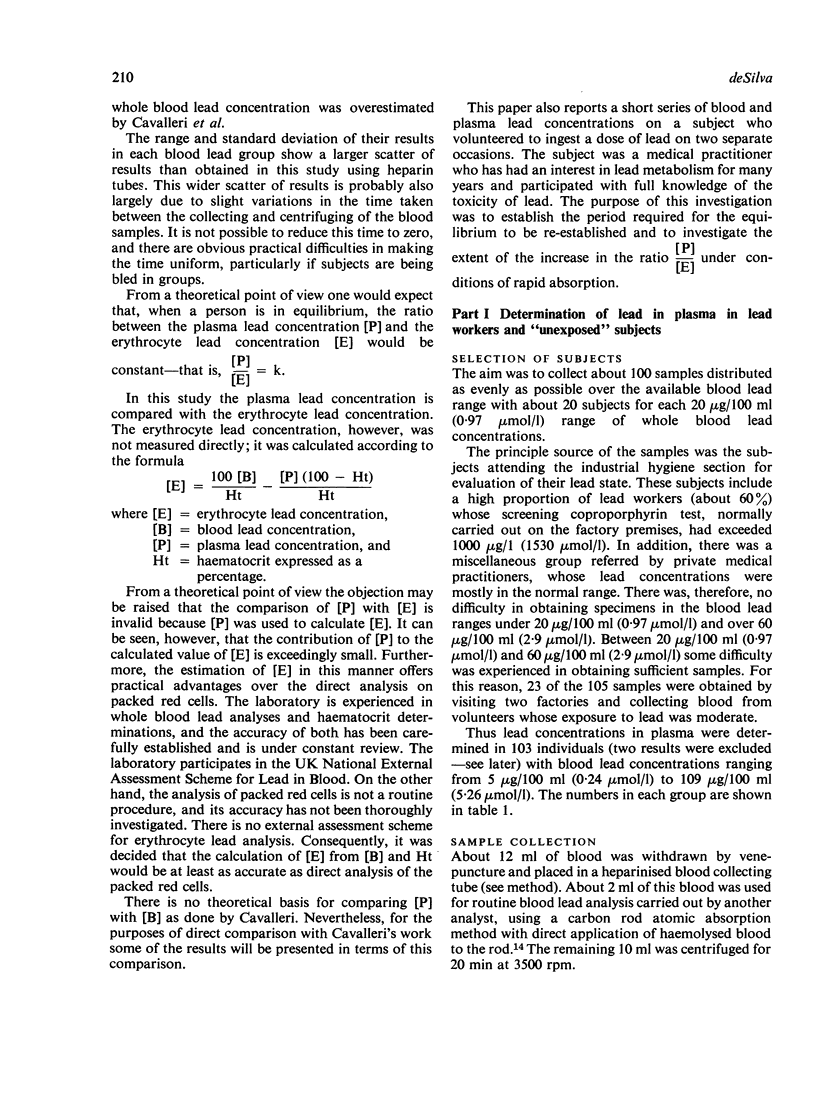
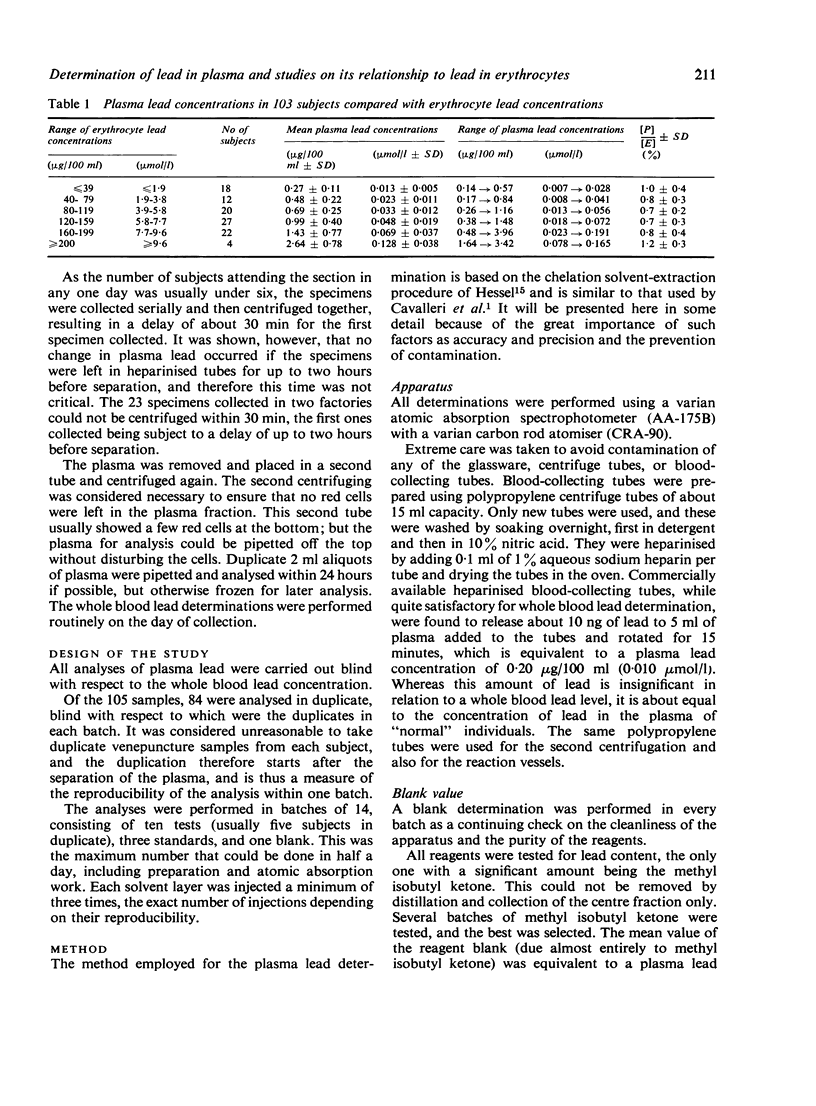
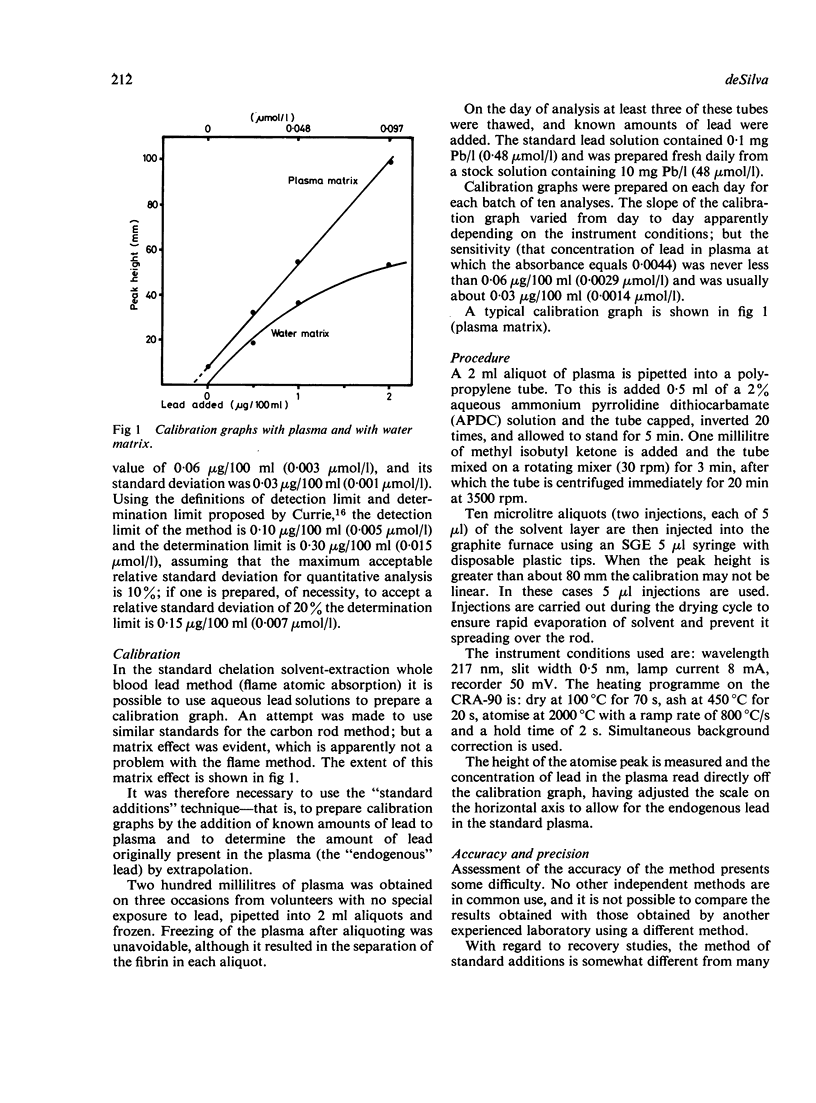
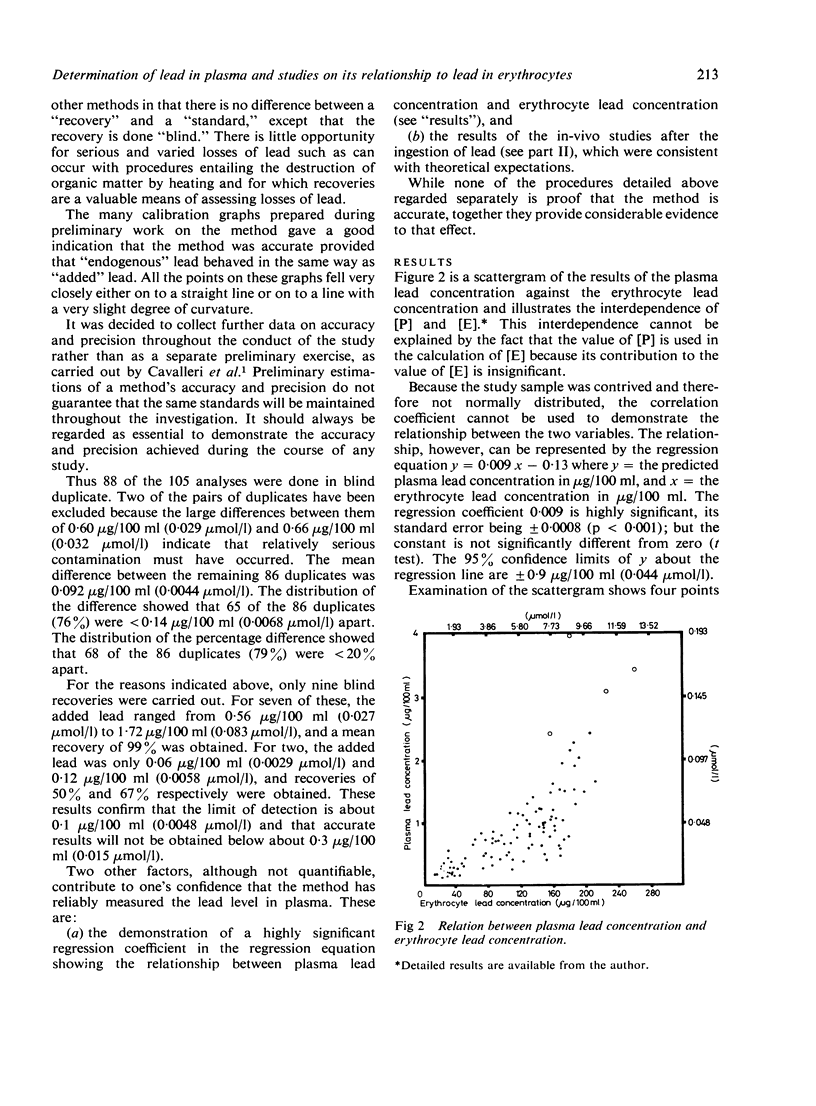
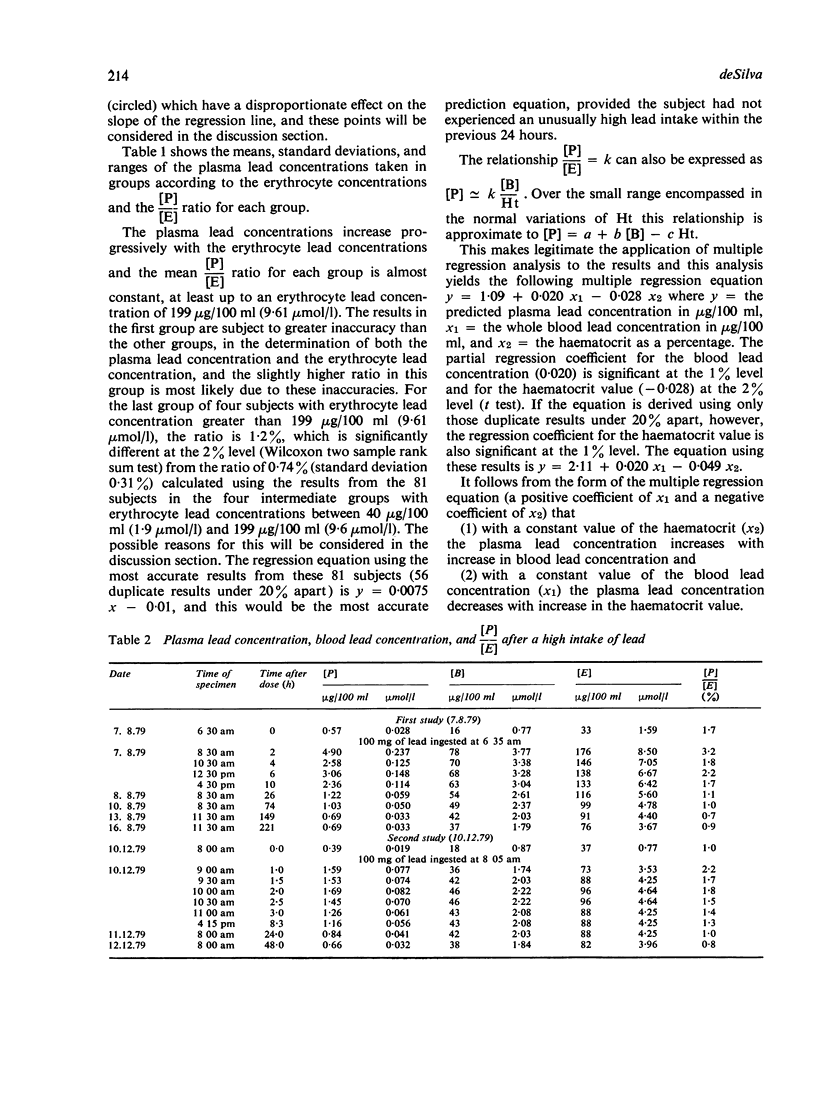
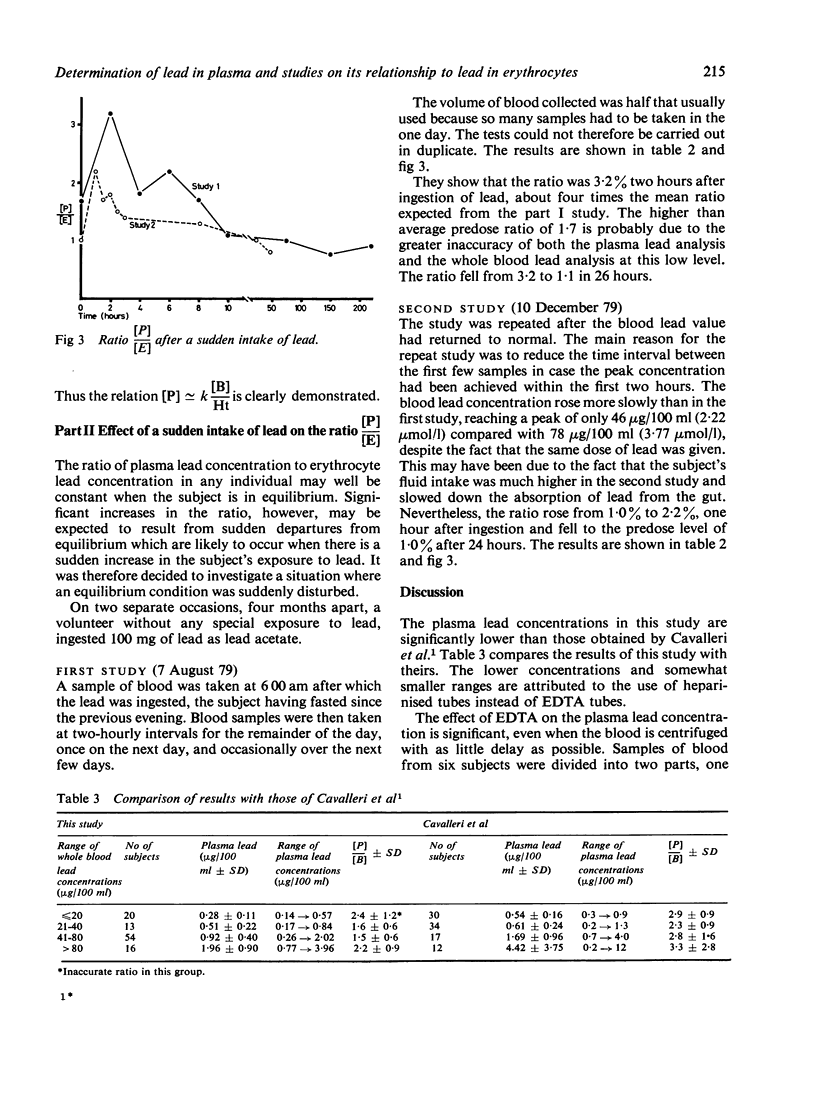
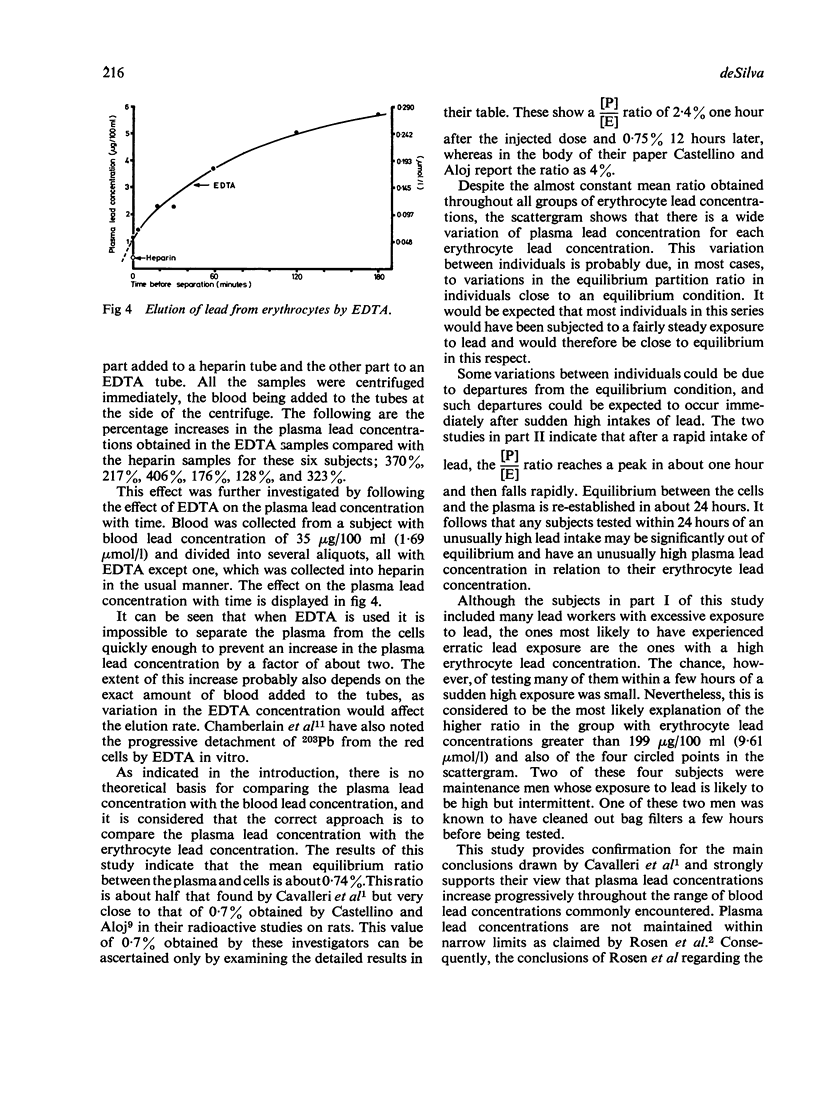
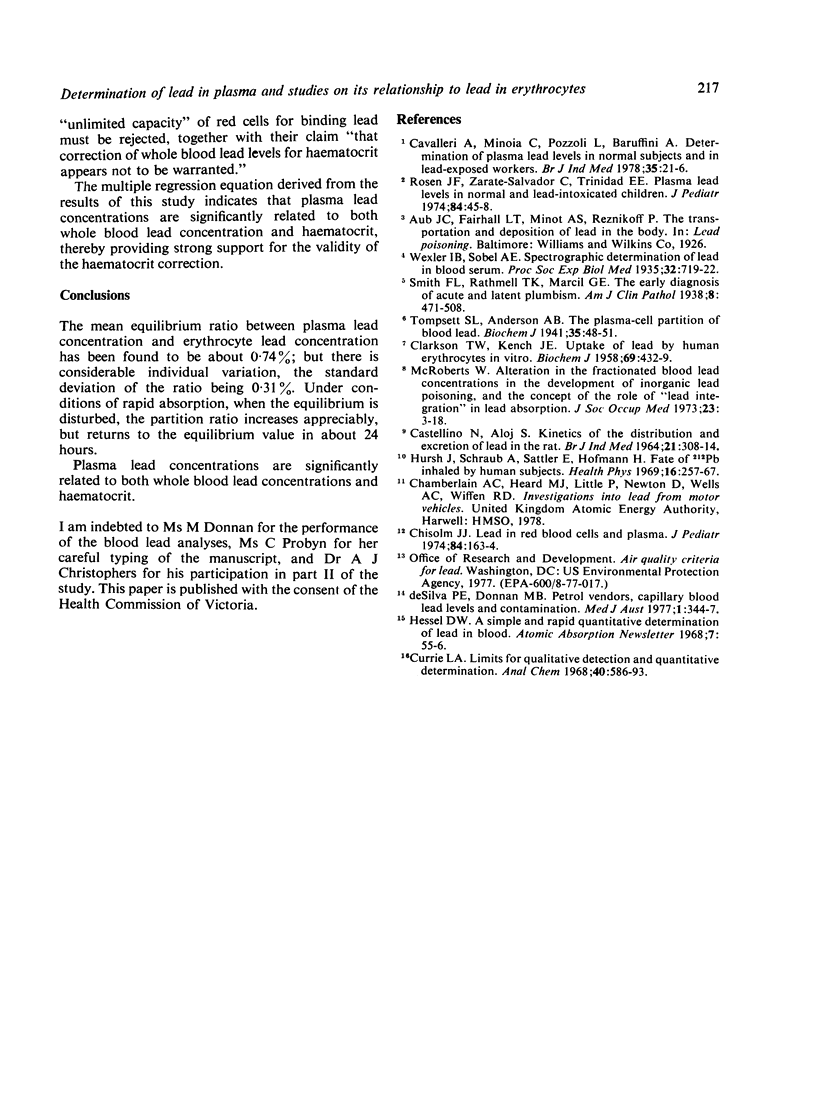
Selected References
These references are in PubMed. This may not be the complete list of references from this article.
- CASTELLINO N., ALOJ S. KINETICS OF THE DISTRIBUTION AND EXCRETION OF LEAD IN THE RAT. Br J Ind Med. 1964 Oct;21:308–314. doi: 10.1136/oem.21.4.308. [DOI] [PMC free article] [PubMed] [Google Scholar]
- CLARKSON T. W., KENCH J. E. Uptake of lead by human erythrocytes in vitro. Biochem J. 1958 Jul;69(3):432–439. doi: 10.1042/bj0690432. [DOI] [PMC free article] [PubMed] [Google Scholar]
- Cavalleri A., Minoia C., Pozzoli L., Baruffini A. Determination of plasma lead levels in normal subjects and in lead-exposed workers. Br J Ind Med. 1978 Feb;35(1):21–26. doi: 10.1136/oem.35.1.21. [DOI] [PMC free article] [PubMed] [Google Scholar]
- Chisolm J. J., Jr Lead in red blood cells and plasma. J Pediatr. 1974 Jan;84(1):163–164. doi: 10.1016/s0022-3476(74)80592-5. [DOI] [PubMed] [Google Scholar]
- Hursh J. B., Schraub A., Sattler E. L., Hofmann H. P. Fate of 212Pb inhaled by human subjects. Health Phys. 1969 Mar;16(3):257–267. doi: 10.1097/00004032-196903000-00001. [DOI] [PubMed] [Google Scholar]
- McRoberts W. Alteration in the fractionated blood lead concentrations in the development of inorganic lead poisoning, and the concept of the role of "lead integration" in lead absorption. J Soc Occup Med. 1973 Jan;23(1):3–18. doi: 10.1093/occmed/23.1.3. [DOI] [PubMed] [Google Scholar]
- Rosen J. F., Zarate-Salvador C., Trinidad E. E. Plasma lead levels in normal and lead-intoxicated children. J Pediatr. 1974 Jan;84(1):45–48. doi: 10.1016/s0022-3476(74)80551-2. [DOI] [PubMed] [Google Scholar]
- Tompsett S. L., Anderson A. B. The plasma-cell partition of blood lead. Biochem J. 1941 Jan;35(1-2):48–51. doi: 10.1042/bj0350048. [DOI] [PMC free article] [PubMed] [Google Scholar]
- de Silva P. E., Donnan M. B. Petrol vendors, capillary blood lead levels and contamination. Med J Aust. 1977 Mar 5;1(10):344–347. [PubMed] [Google Scholar]


